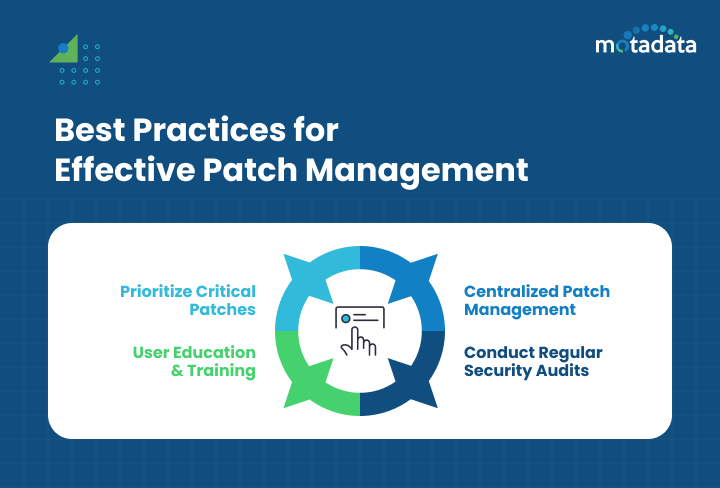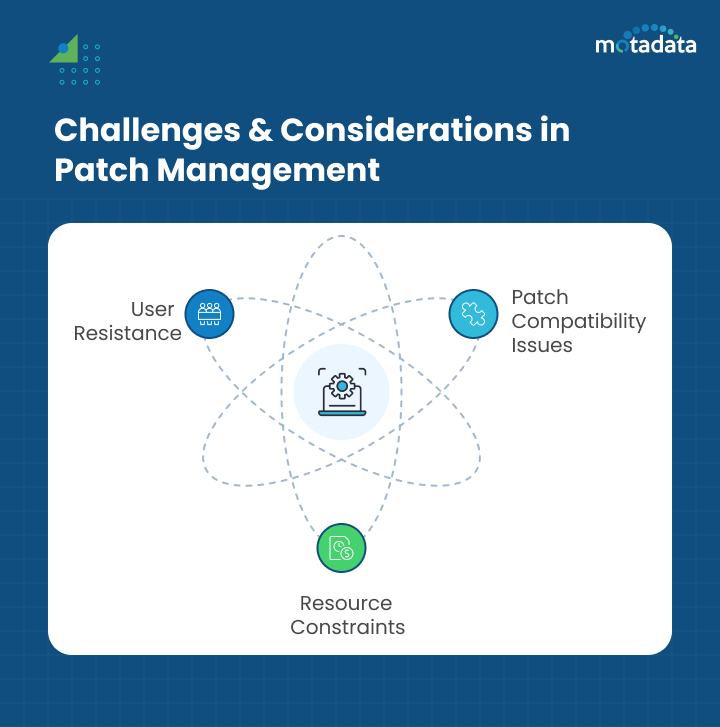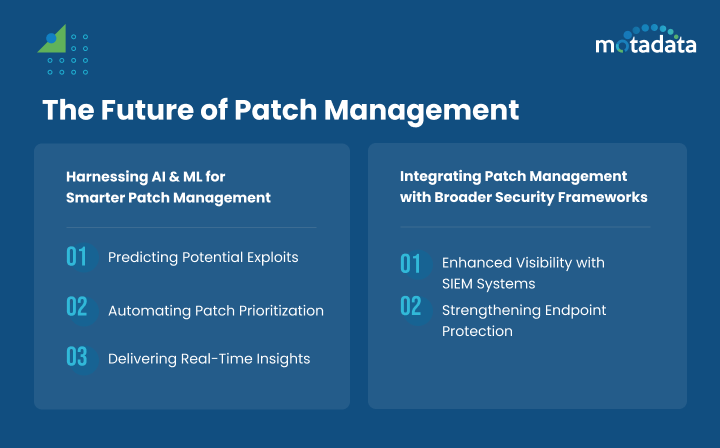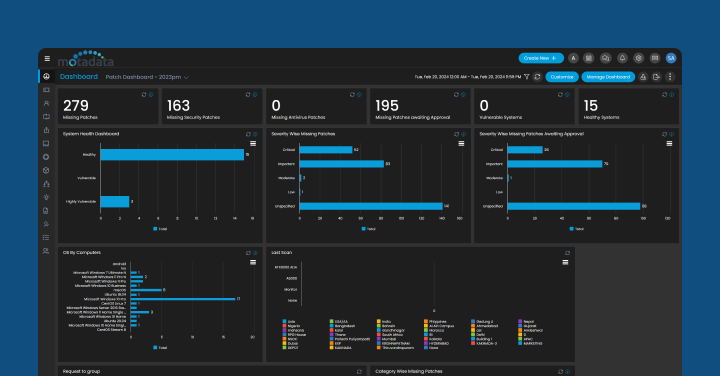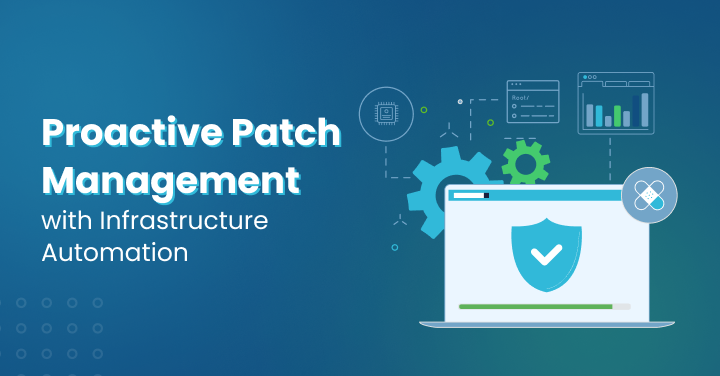Introduction
In a world where cyber threats are growing more sophisticated and relentless, securing IT systems is no longer optional—it’s a necessity. At the heart of this defense lies an often-overlooked yet essential process: patch management.
This systematic approach to identifying, testing, and applying software updates is a cornerstone of IT security and operational excellence. Whether you’re a budding startup or a global enterprise, effective patch management shields your organization from vulnerabilities, reduces downtime, and enhances overall resilience. With the stakes higher than ever, mastering patch management is crucial for staying ahead in today’s digital arms race.
Understanding the Patch Management Process
Patch management involves a structured approach to identifying, assessing, testing, deploying, and verifying software updates or “patches.” These updates address security vulnerabilities, fix bugs, and improve system performance. Here’s a closer look at the core steps:
Vulnerability Assessment
A foundational aspect of patch management is the identification of system vulnerabilities. By leveraging vulnerability assessment tools, organizations can pinpoint weaknesses in their operating systems and applications. This process ensures that the most critical areas are addressed promptly, reducing the risk of exploitation. Regular assessments strengthen the security posture and help prioritize resources effectively.
Patch Testing
Thorough testing is essential before rolling out patches across the organization. Testing patches in a controlled environment that mirrors the live setup helps identify potential compatibility issues or system disruptions. Automated patch management tools can streamline this process, enabling IT teams to validate updates efficiently and minimize risks.
Patch Deployment
Once tested, patches need to be deployed systematically. A well-executed deployment strategy ensures minimal downtime and consistent application of updates across all devices. Endpoint management solutions can facilitate this process, allowing patches to be rolled out to multiple systems simultaneously while maintaining uniformity.
Patch Verification
Post-deployment, it’s crucial to verify that patches have been installed successfully and are functioning as intended. This step ensures compliance and provides valuable insights into the organization’s security health. Regular verification fosters accountability and helps identify areas requiring further attention.
Best Practices for Effective Patch Management
To build a resilient IT infrastructure, adopting the following best practices can enhance your patch management strategy:
1. Centralized Patch Management
Centralizing patch management processes improves efficiency and oversight. A unified platform allows organizations to monitor patch status, identify missing updates, and deploy patches seamlessly. This approach simplifies endpoint management and provides a holistic view of the organization’s security posture.
2. Prioritize Critical Patches
Not all patches are created equal. Prioritizing critical updates that address high-risk vulnerabilities is essential. Focus on:
- Patches that remediate known security exploits.
- Updates for systems handling sensitive data.
- Vulnerabilities that could significantly impact business operations.
By adopting a risk-based prioritization framework, organizations can address the most pressing threats effectively.
3. Conduct Regular Security Audits
Routine security audits are integral to maintaining a strong defense. These audits help identify unpatched systems, assess the effectiveness of vulnerability management programs, and uncover gaps in the existing framework. Insights gained from audits can guide strategic improvements, ensuring sustained compliance and robust security.
4. User Education and Training
Empowering users with knowledge about the importance of patch management is critical. Educate employees on the risks of delaying updates and encourage prompt installation of approved patches. Establishing a security-focused culture enhances overall productivity and reinforces the effectiveness of your patch management efforts.
Challenges and Considerations in Patch Management
While patch management is critical, organizations often face challenges during implementation. Addressing these obstacles effectively is essential for a successful program.
Patch Compatibility Issues
Compatibility conflicts between patches and existing software can disrupt operations. Conducting rigorous pre-deployment testing in a controlled environment helps identify and resolve potential issues. Partnering with software vendors to address compatibility concerns ensures a seamless update process.
Resource Constraints
Effective patch management demands dedicated resources—time, personnel, and budget. Organizations with resource limitations can collaborate with managed service providers specializing in patch management. These experts handle vulnerability assessments, patch deployment, and compliance verification, easing the workload on internal teams.
User Resistance
User reluctance to install patches can impede progress. Concerns about disruptions or potential system issues often cause delays. Mitigate resistance by:
- Clearly communicating the importance of timely updates.
- Addressing user concerns proactively.
- Minimizing downtime during patching.
A user-friendly approach encourages cooperation and reduces resistance, paving the way for a more secure IT environment.
Why Patch Management Matters
The importance of patch management extends beyond security. It directly impacts operational efficiency, regulatory compliance, and overall business continuity. Consider these notable statistics:
- 60% of breaches in 2023 were linked to vulnerabilities for which patches were available but not applied.
- Organizations that implemented automated patch management solutions reported a 35% reduction in downtime due to cyber incidents.
- Companies with robust patching strategies experienced a 50% decrease in recovery costs after security breaches.
The Future of Patch Management
As the cyber threat landscape grows more complex, patch management strategies must evolve to stay ahead. Advancements in technology, particularly in artificial intelligence (AI) and machine learning (ML), are reshaping the way organizations handle vulnerabilities. These innovations empower organizations to maintain robust security postures through proactive and efficient patch management.
Harnessing AI and ML for Smarter Patch Management
Emerging AI-driven tools are revolutionizing patch management by:
- Predicting Potential Exploits: Leveraging threat intelligence to analyze patterns and anticipate vulnerabilities before they are exploited.
- Automating Patch Prioritization: Assessing risk levels to prioritize patches, ensuring critical vulnerabilities are addressed first.
- Delivering Real-Time Insights: Offering actionable data on patch effectiveness, compliance, and security gaps, enabling swift corrective measures.
Integrating Patch Management with Broader Security Frameworks
Modern patch management goes beyond applying updates—it integrates seamlessly with comprehensive IT security systems. For instance:
- Enhanced Visibility with SIEM Systems: Incorporating patch management into Security Information and Event Management (SIEM) platforms enhances monitoring and control, providing a unified view of vulnerabilities and their remediation.
- Strengthening Endpoint Protection: By linking patch management to endpoint detection and response (EDR) tools, organizations can detect and mitigate risks more effectively.
By embracing these advancements and integrating patch management into broader security ecosystems, organizations can enhance their resilience against evolving cyber threats.
Conclusion
Robust patch management strategies are indispensable for safeguarding your IT infrastructure against an ever-growing array of cyber threats. By adopting a structured approach—prioritizing critical updates, conducting regular audits, and fostering user awareness—organizations can significantly enhance their security posture. While challenges like compatibility issues and resource constraints exist, proactive planning and the use of advanced tools can mitigate these hurdles.
Remember, effective patch management is not just a technical necessity but a strategic imperative. Stay proactive, stay informed, and build a resilient IT environment that can withstand the challenges of the digital age.


